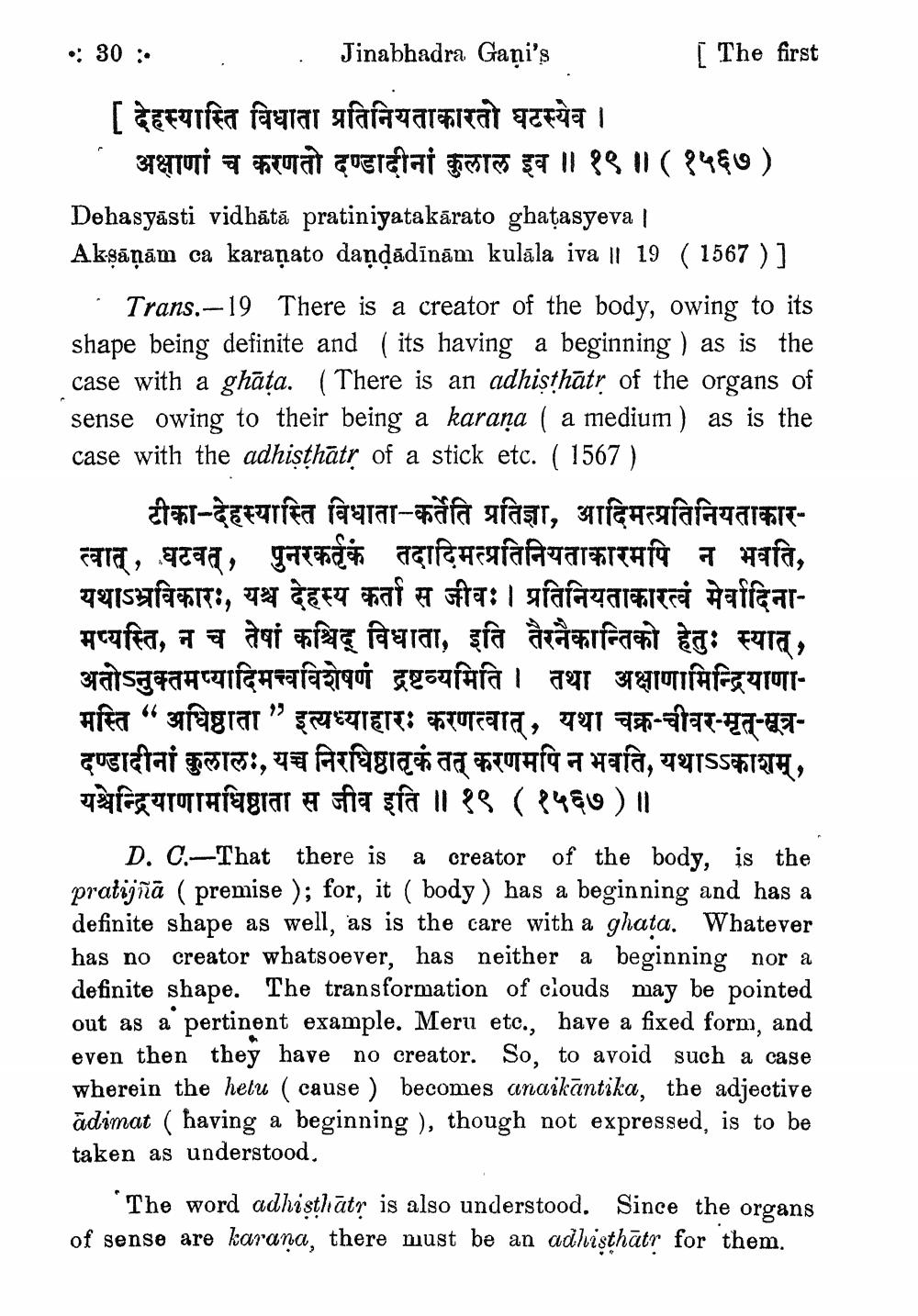________________
: 30 :. . . Jinabhadra Gani's [ The first [ देहस्यास्ति विधाता प्रतिनियताकारतो घटस्येव ।
अक्षाणां च करणतो दण्डादीनां कुलाल इव ॥ १९॥ (१५६७) Dehasyāsti vidhātā pratiniyatakārato ghatasyeva / Aksāņām ca karaṇato daņdādinām kulāla iva || 19 ( 1567 ) ]
- Trans.-19 There is a creator of the body, owing to its shape being definite and ( its having a beginning ) as is the case with a ghāța. ( There is an adhisthātr of the organs of sense owing to their being a karaṇa ( a medium ) as is the case with the adhisthātr of a stick etc. ( 1567)
टीका-देहस्यास्ति विधाता-कर्तेति प्रतिज्ञा, आदिमत्प्रतिनियताकारत्वात् , घटवत् , पुनरकर्तृकं तदादिमत्प्रतिनियताकारमपि न भवति, यथाऽभ्रविकारः, यश्च देहस्य कर्ता स जीवः । प्रतिनियताकारत्वं मेर्वादिनामप्यस्ति, न च तेषां कश्चिद् विधाता, इति तैरनैकान्तिको हेतुः स्यात् , अतोऽनुक्तमप्यादिमत्वविशेषणं द्रष्टव्यमिति । तथा अक्षाणामिन्द्रियाणामस्ति “ अधिष्ठाता" इत्यध्याहारः करणत्वात् , यथा चक्र-चीवर-मृत्-सूत्रदण्डादीनां कुलालः, यच्च निरधिष्ठातृकं तत् करणमपि न भवति, यथाऽऽकाशम् , यश्चेन्द्रियाणामधिष्ठाता स जीव इति ॥ १९ (१५६७)॥
__D. C.-That there is a creator of the body, is the pratijñā (premise ); for, it ( body) has a beginning and has a definite shape as well, as is the care with a ghata. Whatever has no creator whatsoever, has neither a beginning nor a definite shape. The transformation of clouds may be pointed out as a pertinent example. Meru etc., have a fixed form, and even then they have no creator. So, to avoid such a case wherein the hetu ( cause ) becomes anaikāntika, the adjective ādimat ( having a beginning ), though not expressed, is to be taken as understood.
The word adhisthātr is also understood. Since the organs of sense are karana, there must be an adhisthātr for them.




